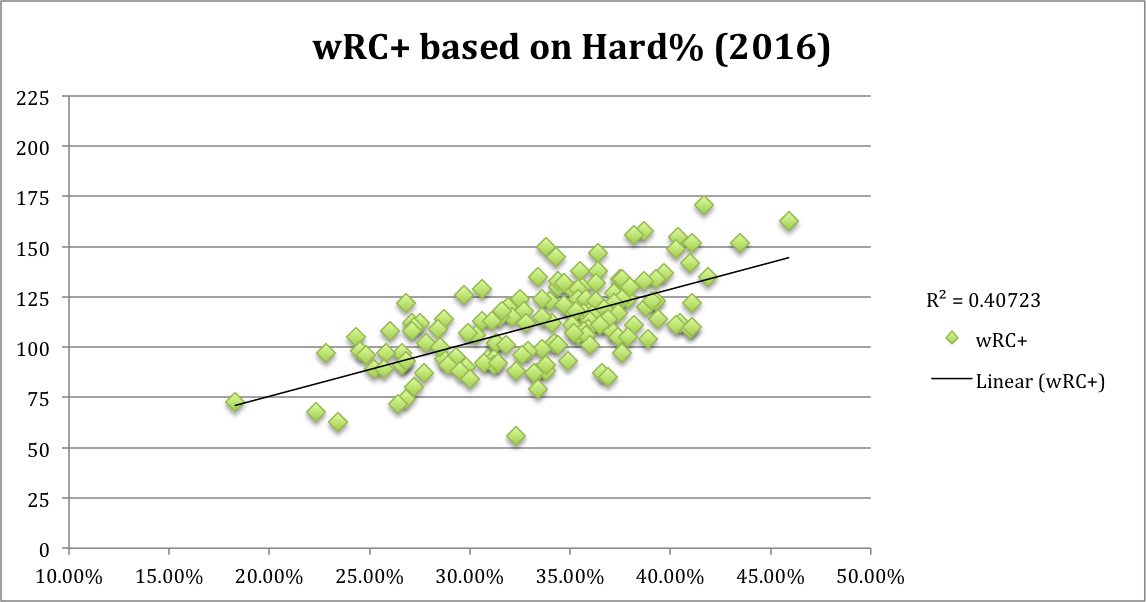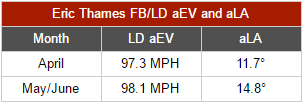Bartolo Colon has not been good. There is no way to spin things to say that he has been good. Conversely, it is pretty easy to spin things to say he is bad. After another bad outing on Monday, his ERA is 7.78 in 59 innings of work. Masahiro Tanaka and Bronson Arroyo are second- and third-worst among qualified starters, at 6.34 and 6.24 respectively.
However, if you look at other statistics, they are not so bad. By FanGraphs’ measure of WAR, he is a tick above replacement level. His K% and BB% have both trended in the wrong direction by a couple points when compared to recent three-year stint with the Mets. His HR rate is up, though some of that may be attributable to what might be a very homer-friendly home park. Colon has also suffered from some bad batted-ball luck, with a BABIP of .353, only .004 points lower than his 2007 season that ended his tenure with the Angels and made many question if he was finished.
However, above all else, what is hurting Colon is probably his strand rate. As of right now, his LOB% is 48.5%. This is terrible. This is pretty much without precedent. And here is a table to show exactly how unprecedented this is:
| Qualified Players with LOB% under 52% (since 1900) |
| Player |
Year |
LOB% |
| Dolly Gray |
1930 |
51.8 |
| Bartolo Colon |
2017 |
48.5 |
| Mike O’Neill |
1903 |
47.4 |
When you see charts like this and statistical points like this, one thing that should always pop into your mind is that the 2017 figure represents about one-third of a season. Regression to the mean should make Colon’s LOB% go up over the course of the next year. Unfortunately for Colon, he is on the wrong side of 40 and often times when older players struggle, whether fair or not, it spells the end of the road. However, there is evidence that in cases like this, pitchers do not get the opportunity to play their ways out of struggles, regardless of age.
What I wanted to do here was look up pitchers who had similar LOB% to Colon through a comparable amount of the season, and to see what happened to those players. To me, that would have been ideal. However, I get an error message when I try to do that on the leaderboards, so I’ll have to present some less ideal numbers and invite anyone else who has access to look into this further.
Going back to 2002, using a minimum of 50 innings pitched, Colon still has the very worst LOB%, just ahead of a guy you might have heard of, Roy Halladay, who clocked a 49.4% rate in what was a truly dreadful 2000 campaign. Looking through the bottom 50 LOB% list, you will find a couple interesting trends. First, a lot of these players played for terrible teams. The early-2000 Tigers and mid-2000 Devil Rays have a few entries. Colon joins Williams Perez’ extremely forgettable 2016 season as the recent Braves on this list. Second, aside from Derek Lowe in 2004, none of these pitchers came close to pitching a full season. Lowe, who checks in at #26 on this list, had 10 more starts and 45 more innings than the second-highest total.
What this list does not account for, however, is that there could be pitchers like Colon that do very poorly in the LOB% department early in the season, but then turn things around due to better luck and thus do not end up on this list. In order to do this, I wanted to look at players that were similar to Colon’s 2017 season. Colon sports a 123 FIP-, which is worse than league average by a decent amount, but not close to his 184 ERA-.
Looking at the next 10 worst LOB% ranked players, you see that they were not having good seasons. Here are the players:
And here is how they compare to Colon’s 2017 (numbers as starting pitcher only):
|
K/9 |
BB/9 |
HR/9 |
ERA- |
FIP- |
xFIP- |
BABIP |
LOB% |
| Colon |
6.1 |
2.59 |
1.68 |
184 |
123 |
113 |
0.353 |
48.5 |
| Next 10 |
5.95 |
2.82 |
1.45 |
166 |
119 |
109 |
0.319 |
54.3 |
Finally, a quick rundown of what happened to each of these players during their unfortunate seasons:
Boof Bonser: Bonser was demoted after May 31st to the bullpen, and finished the year there. Bonser was victimized by a horribly unlucky May, where his LOB% was 33.3%. Despite a lack of actual good pitching, the Twins did give Bonser a chance to improve his luck despite him being only 26. He had surgery in the offseason and barely played in the majors after that.
Dallas Braden: Braden actually did a pretty good job of keeping runners from scoring in his 2007 rookie season when he was coming out of the bullpen, but he was awful as a starter. Still, it seems as though the going-nowhere A’s did not hold Braden back as he finished the year as a starter. Braden was fairly successful until injuries cut his career short, most notably pitching a perfect game in 2010. It’s possible that Braden, 23 at the time, was helped by the A’s decision to let him continue in his starting role at the major-league level.
Charlie Morton: After starting with a 9.35 ERA, Morton was disabled, sent to sports psychiatrist, and demoted to the minor leagues on May 27th. He was able to return on August 29th, and had a decent rest of the season. Morton, who was 26 that year, has bounced around as a fringe starter ever since.
Jose Lima: Lima was a bad pitcher in 2000 and 2001 and somehow managed over 50 innings as a starter in 2002 to make this list. He struggled to a 7.77 ERA and famously responded to his release by Detroit by claiming he was “the worst pitcher on Earth.” Twenty-nine at the time, he managed to start 74 more games in the majors after that.
Brian Duensing: Duensing was 29 in 2012 and he makes this list because he managed to make just enough spot starts, despite the fact he was mostly a bullpen guy. For what it’s worth, Duensing’s 11 starts in 2012 were his last, though he still pitches in the majors. The fact that he went into the season thought of as a bullpen guy means you cannot make much out of his trajectory.
Taylor Buchholz: In his 24-year-old rookie season, Buchholz was not bad by peripheral stats when he was demoted to AAA on July 29th. The Astros, with nothing to play for, had given up on him and traded him to the Rockies, where he has two adequate years mostly pitching in relief. While it would be a stretch to say that he could have been wildly successful had he been given a chance, even a team with a new, forward-thinking GM was unwilling to look past the painful on-field results.
Justin Germano: At 29, Germano got a shot to end the year with the Cubs, and performed okay based on peripheral stats. But Germano was a journeyman player who recorded 23 of his career 48 starts in 2007. He was demoted and released, but honestly it would be the toughest sell job to say that he had any real potential.
Charlie Furbush: Furbush was a mediocre reliever in his age-25 rookie season when he was traded to Seattle in the Doug Fister trade, and for some reason the Mariners let him finish the season as a starter. He wasn’t good, but he was also very unlucky in the stranding-runners department. The Mariners held onto him, but put him back in the bullpen, where he was okay.
Yohan Flande: Flande was a 28-year-old rookie in 2014 that only made two starts after mid-August thanks to his struggles. He has barely been heard from since.
Josh Fogg: Fogg was an old man compared to the rest of this list (except of course for Colon) at the age of 33. I can’t find any indication that Fogg was demoted due to his struggles, and he finished the season in the rotation. The Reds were not playing for anything. After the 2008 season, he barely played.
Conclusion: Players with poor LOB% generally are not pitching very well, and generally are not given a chance to recover. It is likely that extremely poor strand rates are correlated with pitching poorly. Colon’s stint with the Braves and his time in baseball may be coming to an end, and he has likely been the victim of some historically bad luck. But the bad luck can only explain so much. Most of the pitchers who have pitched like Colon in the past were young guys who ended up converting to relievers or guys that were on their way out of the game. Only Braden and Morton remained starters for a significant amount of time afterwards, and Morton has been below average. They were also both almost 20 years younger than Colon is now. In other words, considering all of the bad numbers Colon has, even when taking into consideration his bad luck, there is probably not a good case to be made for giving a fat guy a chance. And he probably won’t get one.







